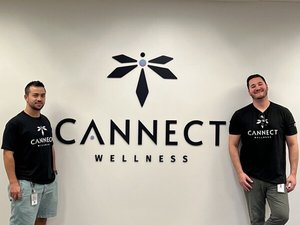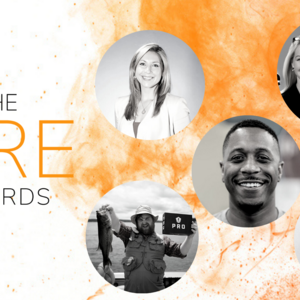The U.S. is woefully behind the rest of the world when it comes to preparing children for the 21st century workforce. According to 2015 Science, Technology and Industry Scoreboard report the U.S. ranks No. 38 in the world in graduating science majors. Furthermore 40 percent of college freshmen say they intend to major in Science, Technology, Engineering and Math (STEM) fields but only 16 percent actually get degrees in those fields— with a disproportionately low amount being women at 35 percent.
If we don’t increase the number of students entering STEM fields, it won’t be difficult for the U.S. to compete in the global economy, it will be virtually impossible. We’re not only talking about fewer home-grown tech millionaires and gazillionaires. Ordinary Americans will not have the skills to qualify for so-called blue-collar and entry level jobs, let alone be capable of earning a middle class standard of living. Companies may have little choice but to look beyond the U.S.’ borders for workers. Arguably, the trend is already underway.
Hence, the clarion call to get more of our children into the STEM education community with a particular focus on underrepresented groups such as girls and children of color. It’s not just about diversity for diversity's sake. It’s a realization that these two demographics—girls and children of color—will represent more than half of the U.S.’ 21st century workforce. In short, our very standard of living could rest on the shoulders of these two groups.
"Children have to see themselves as scientist, technologists and engineers," said Rachel Williams, COO of Paige & Paxton. She co-founded the company to teach kids about science and math, based on puzzle-piece characters she developed 20 years ago to encourage her own daughters' interests in math and science. Daughter Kelley, 29, is the company's CEO. The company now develops curricula for schools and conducts make-a-thons and programs for other organizations to get kids under the age of 8 comfortable with STEM.
One of the methodologies that they’ve integrated into their approach is “STEM learner identity” coined by National Academy of Sciences in its research report entitled “Learning Science in Informal Environments: People, Places, and Pursuits.” The study concluded that for girls and children of color handling the rigor of STEM coursework is not enough to persuade them to pursue a STEM career. Diverse students must also develop a sense of STEM identity—that is “see themselves” as a “STEM” person, a “science” or a “math” person.
While the report’s conclusion is startling, it’s not surprising. Identity is a powerful force in our lives. We have multiple identities. We’re fathers, mothers, college professors, and soccer fanatics. We’re police officers, sisters and knitters. Still another individual may “see herself” as auntie, CPA and someone who enjoys French cuisine. Identities help us to define who we are, how we fit into the world around us and even what’s important to us. The same goes for our academic identities.
Even more salient for increasing the number of girls and students of color in the STEM pipeline is that our identities begin to form in elementary school. Some studies have shown that by the time students reach the age of 8, they have already “opted out” of certain careers.
These facts led Lee and Daisy Copeland to enroll their 7-year-old daughter, Zora, in the Paige & Paxton STEM enrichment program at Family Focus in Evanston, IL, a suburb just north of Chicago.
“One of the things that Paige and Paxton was able to do in the summer program that Zora was able to participate in was exposure and being able to see herself within the subject matter,” says Daisy. “Having the opportunity to learn about what these professionals actually do for a living and applying it to real life things around them, making observations about the world around them, getting them to learn how to critically think then that allows them the opportunity to think beyond the norms of what girls are expected to become.”
Two of the most widely accepted tools to assess STEM identity are the “Draw a Scientist Test” (DAST) and “Draw an Engineer Test” (DAET), in which researchers ask students to draw their idea of "a scientist doing science" and “an engineer doing engineering.” Drawing, specifically, is a useful tool because it allows students who may not be ready or able to communicate complex ideas in writing or speech (young children or english language learners) to communicate their beliefs about science and engineering.
Students are asked to draw a scientist prior and post-intervention. Both the before and after drawings and verbal descriptions are analyzed for standard indicators of stereotypes. For example, does the student’s drawing of a scientist include the common stereotypes of the Caucasian male wearing a lab coat and eyeglasses? Does the drawing indicate that the student perceives science as something that is done only in the laboratory? Does the drawing of an engineer include someone with a hard construction hat or operating a train?
(Right) Zora’s pre Draw-a-Scientist test before she began the Paige & Paxton STEM summer program. (Left) Zora’s post Draw-a-Scientist test, 5 weeks later at the conclusion science unit. Zora’s perception of a scientist has expanded to include individuals who look like her.
Before the science unit, Zora viewed a scientist as the stereotypical “mad” scientist—a caucasian male with crazy hair, complete with a lab coat and eyeglasses creating monsters in a laboratory. After completing the 5-week Paige & Paxton science unit, Zora drew a scientist that mirrored an image of herself and her interests. She drew a botanist in the image of an African-American woman dressed in flowery attire, engaging with and observing plants in the real world, instead of alone in a dark lab.
“Zora actually sees that somebody that looks like me can actually be a scientist and that's a little bit different than what she may see on TV or what she maybe exposed to in different types of media,” says Lee. “She may see only the white male represented, but she sees the black female, which is relevant to her because that means that she sees herself having the capability to be a scientist, to be somebody that works in the tech industry and be an engineer or to be somebody who does something with math. That's key.”
Along with the identity shift came a shift in Zora’s interests and perspective.“The change that I saw in Zora is that instead of saying let's read a book about princesses and unicorns and things that are fantasy or make believe, now she wants to explore things that are real, things that she can touch, things that she can see,” says Lee.
“It’s opened a whole new world for the girls and for ourselves,” says Lee. “We said ‘what can we do at home?’ and then we found out that Paige & Paxton had programs for us to do with the girls at home.”
The Copelands joined Paige & Paxton online parent community, Little Learner STEM Labs. The platform has given them the power to continue to nurture her STEM interest, knowledge and identity. Since joining, Zora and her sister Ella have participated in their school science fair. They’ve grown plants and observed them like real botanists. They've learned about civil engineering and built a model sustainable city out of recyclables, which their toy figurines now reside in.
“I've also come to realize that the reward is not to see what they become when they 'grow up,'” says Daisy. “The reward is really the journey itself, to wherever it is they will go and to whomever it is they will become.”
(Featured Image: The Copeland family in a suburb of Chicago engages in at home virtual science experiments offered by the Paige & Paxton Little Learner STEM Labs community for families with children 8 and under).








